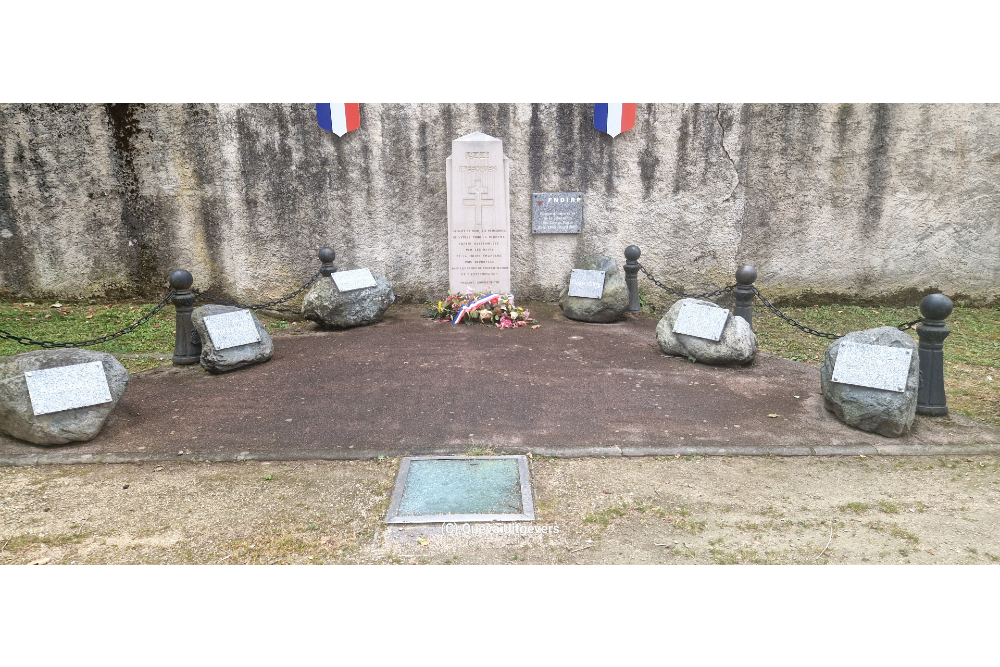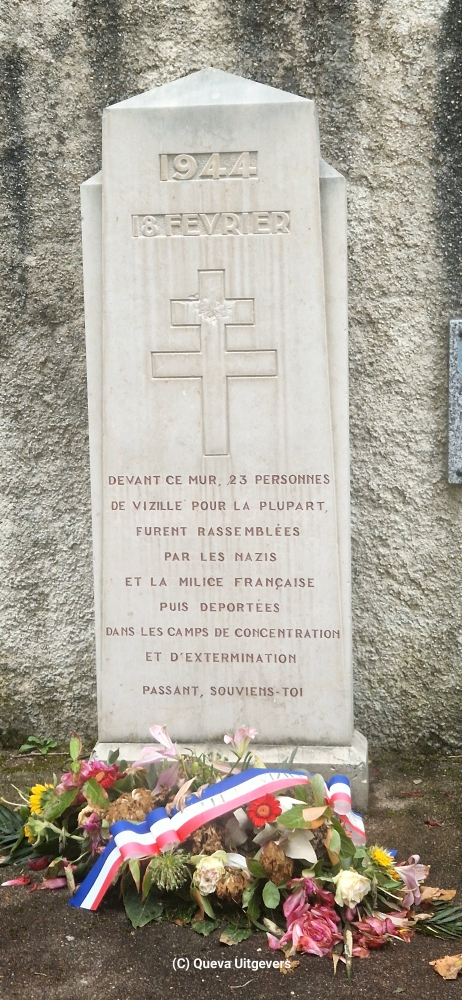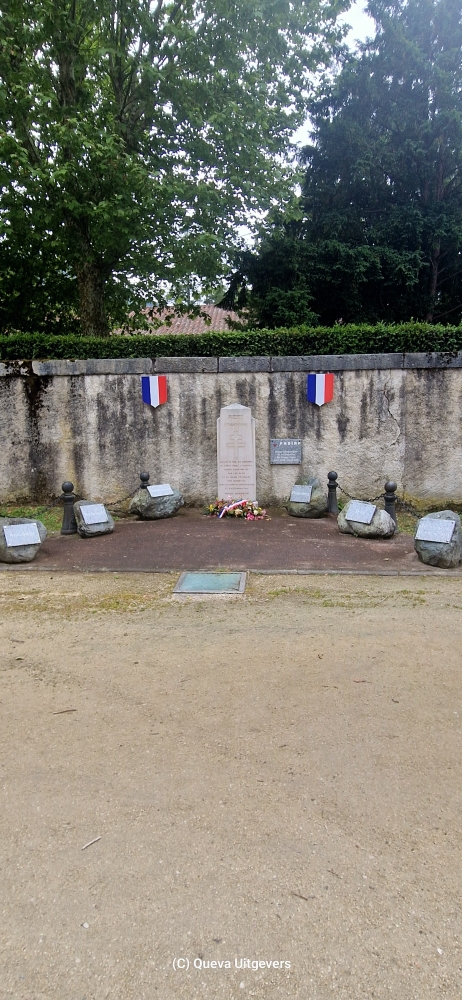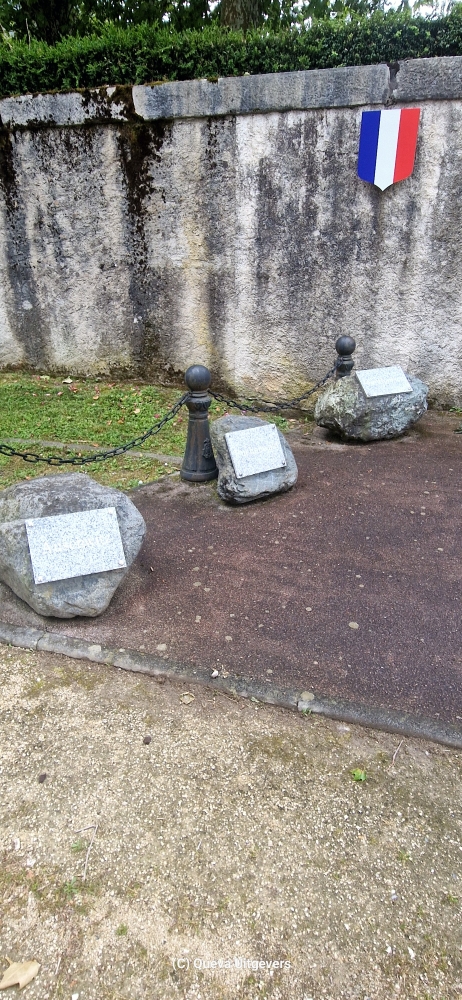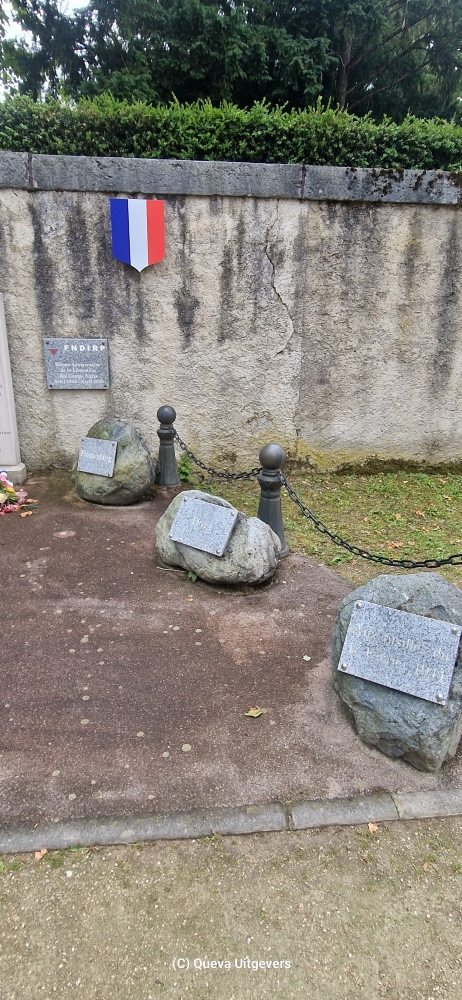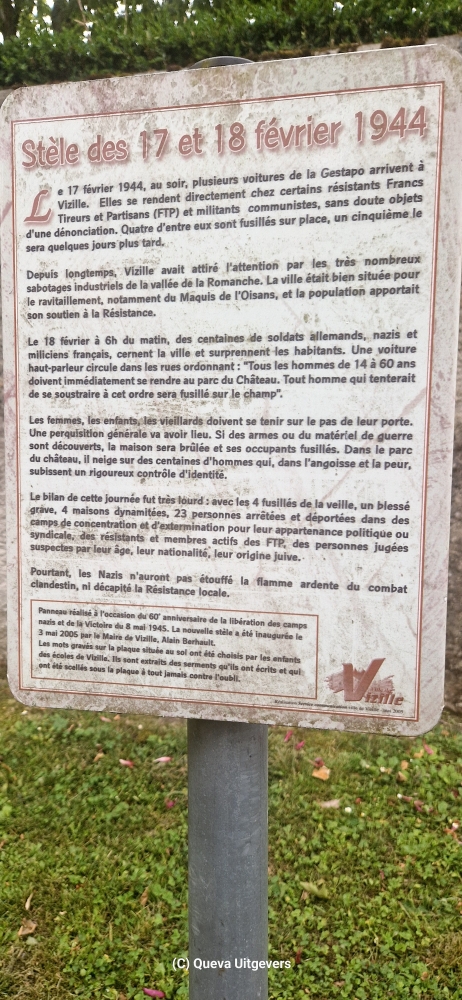Memorial 17th and 18th february 1944
This monument commemorates the arrest and deportation by the Nazis of 23 citizens of Vizille on 18 February 1944.
The monument bears the following inscription:
'1944 18 fevrier, Devant se mur 23 personnes de Vizille pour la plupart, furrent rassemblées par la nazis et la milice Française puis déportees dans les camps de concentrations et d' extermination. Passant, souviens toi'
(1944 18 February, In front of this wall, 23 people, mostly from Vizille, were rounded up by the Nazis and the French militia and then deported to concentration and extermination camps. Passers-by, remember)
The monument is flanked by boulders bearing the names of the camps to which these people were deported: Auschwitz, Buchenwald, Dora, Flossenburg and Mauthausen.
The history according to the information board placed at the monument:
On the evening of 17 February 1944, several Gestapo vehicles arrived in Vizille. They went straight to the homes of several resistance fighters, members of the Francs-Tireurs et Partisans (FTP) and communist militants, probably as a result of betrayal. Four of them were executed on the spot, a fifth was executed a few days later.
Vizille had long attracted attention because of the many acts of industrial sabotage in the Romanche valley. The town was conveniently located for supplying the Maquis of Oisans in particular, and the population supported the resistance.
On 18 February at 6 a.m., hundreds of German soldiers, Nazis and French militias surrounded the town and took the inhabitants by surprise. A truck with a loudspeaker drove around with the message: "All men between the ages of 14 and 60 must report immediately to the castle park. Anyone who tries to evade this will be executed on the spot."
Women, children and the elderly must remain standing in their doorways. A house search will take place. If weapons or war material are found, the house will be set on fire and the inhabitants executed. It is snowing in the castle park, falling on hundreds of men who, fearful and frightened, are subjected to identity checks.
The toll of this day is heavy: in addition to the four executed the day before, there is one seriously injured, four houses blown up and 23 people arrested and deported to concentration and extermination camps because of their political or trade union involvement, their activity in the FTP resistance or because they were suspected because of their age, nationality or Jewish origin.
Nevertheless, the Nazis were unable to extinguish the fiery flame of the clandestine resistance, nor to decapitate the local resistance.
Do you have more information about this location? Inform us!
Source
- Text: TracesOfWar
- Photos: Hans Boin © Queva Uitgevers
